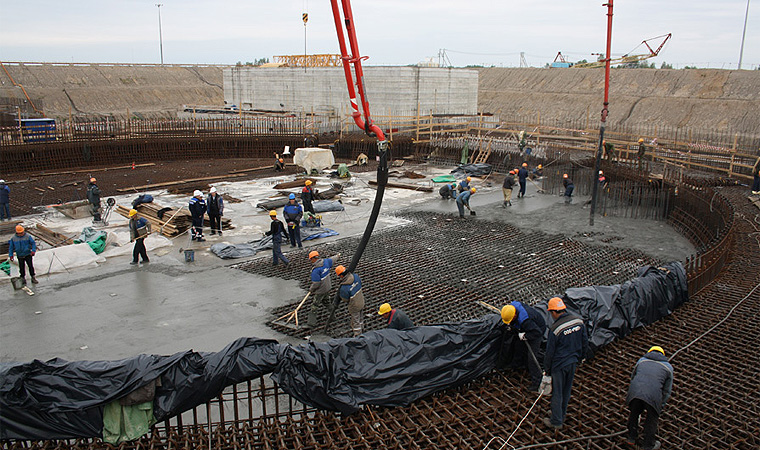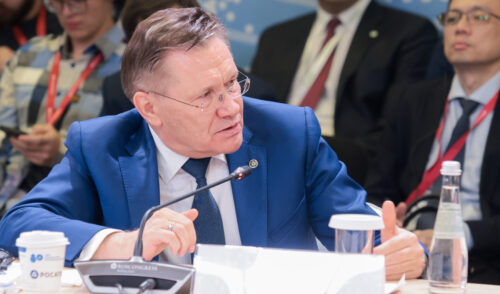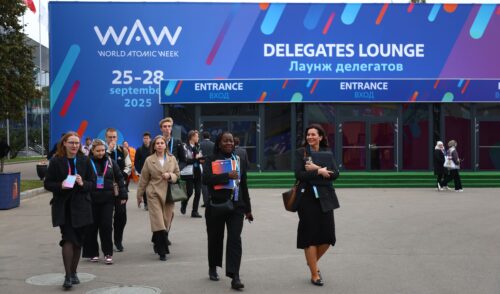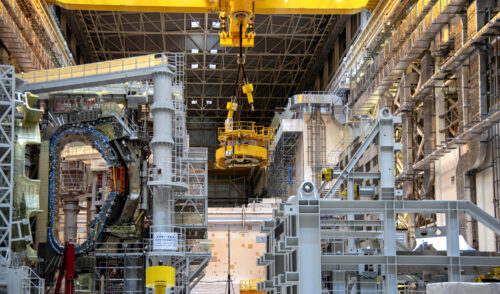
The Next Station is Baltic
back to contentsIn April in Saint Petersburg there was held a conference of the Council of Baltic Sea States (CBSS) dedicated to environmental protection of the Baltic region. The high-level visitors discussed the ways of reducing ecological threat. Among the visitors was Sergey Boyarkin, Director of Rosatom’s Programs. “Taking part in these kind of activities is a part of Rosatom’s policy, we are always committed to openness”, – he explained. In his speech Boyarkin gave some details of the State Corporation project, important for the Baltic region.
Straight Talk
The Baltic NPP is being constructed in Neman, Kaliningrad region. Today 100% of energy in the region is produced by burning hydrocarbon, emitting greenhouse gases. The launching of the first unit will help to significantly reduce the pollution. “A power unit NPP prevents 12 million tons of CO2 emitted into the atmosphere annually. It’s a substantial contribution into environmental protection improvement”, – notes Sergey Boyarkin.
The heads of governments of the Baltic Region spoke a lot about how to solve the problem of climate changing at the planet. The participants admitted that increasing EE along with operating Ecologically safe renewables gives many options for environmental protection in the Baltic Sea region.
Ready For Visitors
The Baltic NPP is the first Russian Project of Rosatom open for foreign partnership. “We are doing it not because we lack money. The plant will be launched anyway and the Corporation will get some good benefits on European power market. But we believe it wrong not to offer our colleagues to take part in the business”, – says Boyarkin. The plant will consist of two units with the total capacity of 2,3 GW, the first one will be put into operation in 2017, the second – a year later.
This will make the Kaliningrad region a big exporter of power, there are already some negotiations in progress. By the way, some foreign companies are already taking part in the plant construction. Thus, French Alstom supplies equipment for the turbine island. Contract financing will be offered on security of the Governmental Investment Fund COFACE.
Couldn’t Be Safer
“The plant will be built basing on the technology of the third generation. Its main feature is that in case of any emergency no radioactive elements will go beyond the vessels which eliminates the threat of environmental pollution”, – says Boyarkin.
The project offers four independent safety channels. “What happened on Fukushima, when its power supply sources failed to perform their function, is totally impossible for us”, – says the expert. Speaking about Fukushima: Russian approach to security provision suggests managing all possible consequences of accidents beyond design basis. ”For this sake the plant is equipped with a wide range of passive systems, designed for cooling of NF, – continues Sergey Boyarkin. – The project boasts a unique design feature localizing all radioactive materials even if the reactor itself melts down – a core melt trap”.
High Standards
Before starting the construction Rosatom for two years was consulting nine states of the Baltic region on the issue of environmental effect. Thus, with Germany there were two series of consultations: first in Berlin, then in Moscow, in order to discuss some new issues after the Fukushima catastrophe. “We receive foreigners in our research centers, showing that we are ready to work in the open mode”, – says Boyarkin.
He also noted that the Baltic NPP project is developing in total accordance with existing standards, established by the Espoo Convention on Environmental Impact Assessment In a Transboundary Context. “Although the RF didn’t ratify this convention, we voluntarily observe its conditions at the two Russian Baltic region projects – “Nord Stream” and Baltic NPP”, – Sergey Boyarkin sums up.
Silence Was the Stern Reply
The only state of the region that never took part in the consultations was Lithuania. In 2010 the documentation concerning the construction of the Baltic NPP was sent to Vilnius five times, with about 11 thousand paper sheets of additional information. However, much to the regret of the Russian side, there was no reply.
Nevertheless, Rosatom stays optimistic. “A month ago we prepared general replies to the question that the Lithuanian side had been asking on the project and sent the documents to the Minister of Environment”, – says Boyarkin. For the sake of this dialogue the State Corporation Director Sergey Kiriyenko is ready to visit Lithuania personally, to have all necessary consultations; Rosatom also is willing to send its specialists to the country and receive Lithuanian delegation at the Baltic NPP construction site, as well as in either Saint-Petersburg or Moscow, depending on the visitors’ choice.
“We truly hope to finally have some dialogue with the government of Lithuania. Exchanging information is always helpful, especially in such a sensitive industry as nuclear power”, – Boyarkin sums up.




